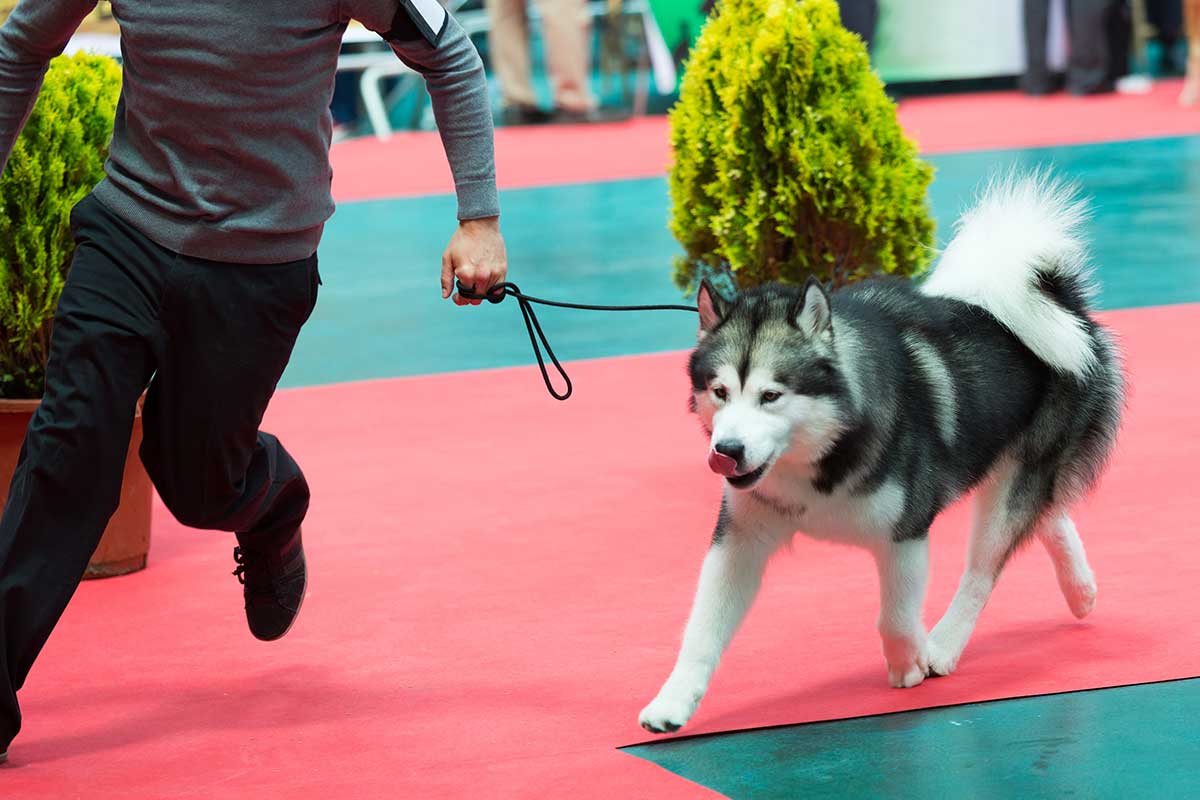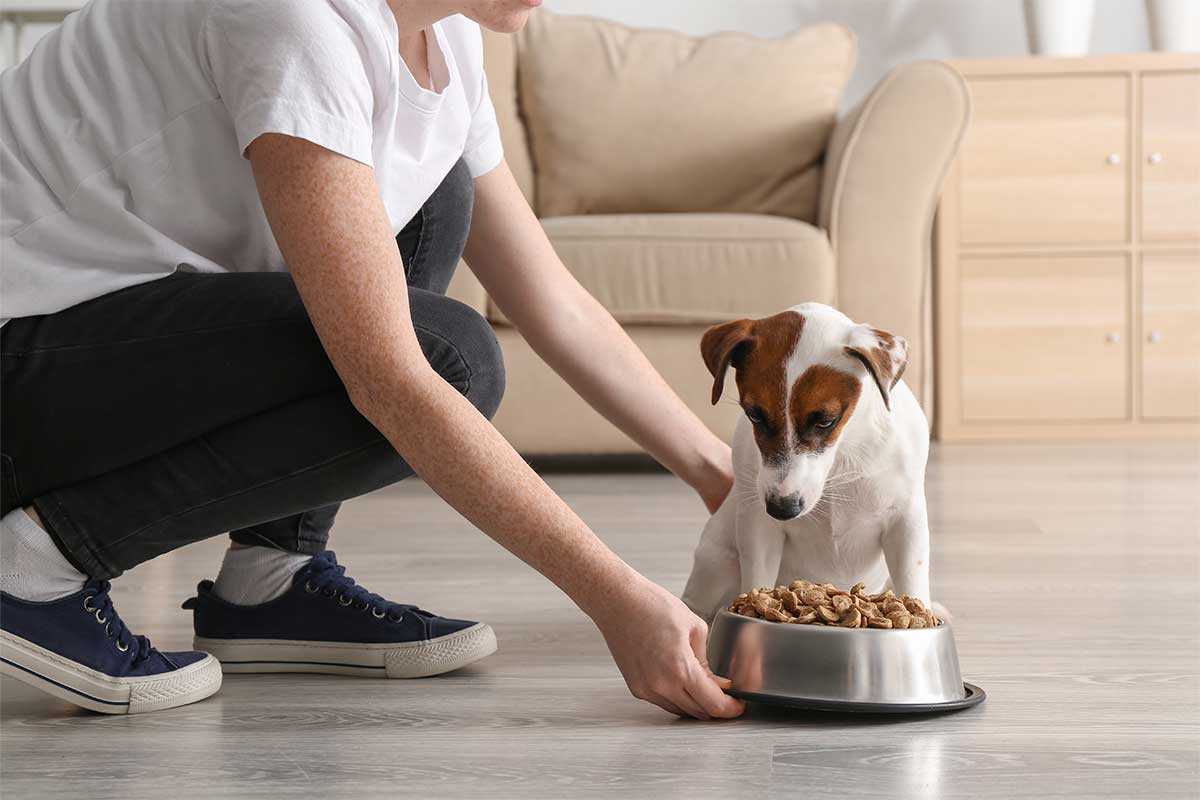Everything You Need To Know About Entering Your First Dog Show - northernvirginiamag.com
You have fallen head over paws in love with your new COVID-rescue mutt, and are now wondering if you are the only human who firmly believes this is the most beautiful and intelligent example of its breed in the history of the world.
There's only one way to find out: a dog show!
But before you trot your pooch into this minefield of abject discipline and merciless judgement—we've seen a few minutes of that Westminster thing on TV—you, the human, need to know some things.
Dog shows are aggressively formatted, hewing to a tradition that began in 1850s England and still retain a whiff (so that's that smell) of the arch prim-and-properness of its Victorian origins. The idea behind them was, and is, to see if a purebred dog was indeed the perfect specimen for that breed, and thus ideal for breeding stock.
Which explains why dog show judges are so adamant about the details: the size, the weight, the proportion of all of it, the teeth, the musculature, and the way the dog moves all must conform to an exacting standard. Even infinitesimal variations will cost the dog when it comes time for judging. Oh, and your dog must not be spayed or neutered, because breeding is the whole point.
In recent years, the American Kennel Club (AKC)—basically, the national governing body, although it has competition—has sanctioned mixed-breed shows for dogs not eligible for the elite AKC's more popular purebred competitions. This likely is a response to increased pressure to help put "puppy mills" out of the business of breeding—and breeding and breeding—and selling purebred dogs. Not only does inbreeding create health issues in offspring, but millions of mixed-breed dogs are killed each year in shelters because of a dearth of suitable homes.
So, want to show your dog? Listen up:
Consider your dog's vibe.
"A dog should naturally have a calm, confident personality before it is even considered to be trained as a show dog," says Jeanie Bieniek, a longtime master dog trainer and dog behavioral therapist.
"They should also never show any signs of aggression or reactivity around people or other dogs. There are plenty of show dogs that live well in homes, but most family dogs would not do well as show dogs."
Train early.
To get the most out of your new pooch, "it is best to start training puppies as soon as you bring them home," says Bieniek, who also owns the Bark Busters Home Dog Training franchise of Northern Virginia. "Puppies need to understand their new environment and their relationship with you. The sooner you start, the better adjusted your puppy will be in its new home." For older dogs, "I would also recommend training as soon as possible. A new dog needs to understand its new owner and the rules in its new home in order to feel comfortable."

Treat your dog like a dog.
It's reasonable you still think your new pet is a possible ribbon-winner, but your enthusiasm may be blinding you to the correct approach at raising a dog.
"One of the biggest mistakes that new owners do with their dog is to treat their dog as though it were a human child," Bieniek says. "We are not dogs, and dogs are not humans! People need to learn how to understand and communicate with their dog in the way their dog understands the world."
Don't let your new canine love interest own the house.
You, the human, have to get control. "Another common mistake is to just let your dog have free run in your house without any guidance or structure on how to behave in their home. Dogs crave guidance and structure in their lives," Bieniek warns.
"People are quick to get the affection and love from their dog that they crave as a human, but often don't give their dog the guidance and structure that it craves as a dog," she says. "A relationship with a dog should go both ways."
Dog Show Fails
- Jack Russell terrier Olly somehow managed to enter the famed Crufts show in England only to completely fall apart when it came time to show his agility. During his 2017 run through the obstacle course—something he had practiced time and again—he fell off props, skipped parts, and at one point ran through a jump bar and face-planted, sliding several feet on his head and back. He was OK. Did Olly go viral? You had to ask?
- At the 2017 Westminster Kennel Club Dog Show, Mia the beagle defied her handler in the obstacle portion of the show and freelanced her routine, to impressive heights. The stopping-to-sniff-her-own-butt was a showstopper. Has she been seen more than 1 million times on YouTube? You had to ask?
- In the 2018 Crufts agility contest, Tinklebury, a 4-year-old Papillon, stopped the show by stopping, literally, the show. She just stood there staring ever-so-adoringly while her pet parent Melinda begged her to jump, jump, come on, jump. She did not jump.
- At the 2014 Crufts, Lucas, a Saluki, ran through the first tube of the course and then full speed into the bleachers.
- Here's one you can try at home. A dog show in Finland rolls out a carpet and puts dog toys and bowls of food on the sides for the entire length of the path. The idea is to unleash the hound and have it come to the handler without stopping to snack or play. In 2014, an unnamed Golden Retriever—which you would imagine knows the rules—hilariously did not make it past the first tempting treat.

About That Expensive Dog Food
New dog owners are confronted with a confounding number of food choices we didn't have in the "good old days" of pet ownership. For our mutts, there was Alpo in the can and, for special days, Gravy Train, those inimitable dry nuggets that, when you added water, turned into a soup of soggy kibble. They either ate it or they didn't and that was the way it was.
Well, times have changed! These days, grocery stores and specialty pet retailers have rows and rows of bags, cans, pouches, and refrigerated bologna-like tubes of dog food, all of it marketed to look like something you'd find on a human's dinner plate at a fancy French restaurant. Really, there are images of celery on some brands. What dog craves celery?
But as we know now, our beloved canines are…sensitive. Dog foods these days are designed to provide clean nutrition in formulations that attack everything from chronic digestive problems to allergies. Grain-free, beef-free, chicken-free, and other options are on the table. Or in the bowl.
"Good nutrition is very important for dogs," says Jeanie Bieniek of Bark Busters. "Food affects a dog's health and energy level, and can even affect their behavior."
The price points for dog food range from 75 cents or less a can to $4.50 or more. Is the pricier any better?
"It is more important what goes into dog food than how much it costs," Bieniek says. "Do your own research, and don't just trust marketing from dog-food companies to make your decisions."
Your veterinarian can help with these decisions, based on your dog's particular strengths, weaknesses, and dietary needs. Just ask.
This story originally ran in our October issue. For more stories like this, subscribe to our monthly magazine.



Comments
Post a Comment